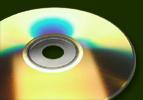 |
|
|||||||||||||||||||||||||||||||||||||||||||||||||||||||||||||
During the 1960s, some legendary artists began to explore the method, unique among the arts, by which film combined sound with moving images. Their goal was to move film away from simply being a storytelling medium toward more ambiguous art forms, such as sculpture and painting. The most famous of these artists was Andy Warhol, with Stan Brakhage, Stan Vanderbeek, Jack Smith, Jonas Mekas, Bruce Connor and Takahiko Iimura also being noteworthy. The Collected Films of Takahiko Iimura, No. 1 Onan (1962) is the only film on the DVD that seems to have some semblance of a plot. In this surreal film, a young man lies on a bed and burns holes through girlie magazine pics, then seems to give birth to a transparent egg. With its grainy black-and-white photography and droning, white noise of a score (imagine a large, old air conditioner rumbling in a small room), the film at times bears a striking resemblance to David Lynch's Eraserhead White Calligraphy (1964) is a silent film that features Japanese calligraphy scratched directly onto the film surface. In what must have been a painstaking process, each individual film cell contains a separate character. According to the liner notes, if the film were stretched out and read, it would tell a Japanese fable from the eighth century. However, when played, it is impossible to read. Still, telling the story is beside the point. When the film is played, the lines of the individual characters dance and sway across the screen, creating a somewhat hypnotic cartoon. AIUEONN Six Features (1993) focuses on Iimura's experiments with computers. The film features the artist in close-up in front of a background that constantly changes color. As the artist draws out the sound of Japanese vowels on the soundtrack, his face distorts and changes into shapes (some of which are humorous, others of which are somewhat disturbing and scary). If one can recall the famous video for Soundgarden's "Black Hole Sun," it will give him or her and idea of the effect used in this film. Faces (1969) simply shows the facial features of three people (two women and one "drag queen" from Andy Warhol's troupe) in extreme close-up, while the soundtrack is a loop of a woman laughing. While interesting at first, this film quickly becomes boring and monotonous. It is perhaps the weakest film on the DVD. Of more interest is the final feature on the DVD, Filmmakers (1969). In this film, Iimura creates a short self-portrait as well as brief portraits of five of his peers: Brakhage, Vanderbeek, Smith, Mekas and Warhol. In each portrait, Iimura attempts to copy the styles and traits of each artist (Vanderbeek's constantly moving camera; Mekas' experiments with film speed; Warhol's use of flashes of white against a black background), while briefly commenting on the images being shown. The film serves effectively as an introduction to the film styles of these artists. I would recommend this DVD only to those truly interested in avant garde cinema. The goal of Iimura's work was not to entertain but to advance the medium as an art form. Those willing to think outside the box might find this DVD fascinating and insightful, for Iimura truly explores the various means by which images can be married with sound. Again, those willing to give this DVD a try should not attempt to search for any plot in these film but to embrace the ambiguity of each short film, as one might view a painting or sculpture. Note: The only extra on this DVD is a brief biography of Iimura. |
|
|||||||||||||||||||||||||||||||||||||||||||||||||||||||||||||
|
||||||||||||||||||||||||||||||||||||||||||||||||||||||||||||||
| action | animation | art house/international | comedy | documentary | drama | family | horror/sci-fi | suspense | television | ||||||||||||||||||||||||||||||||||||||||||||||||||||||||||||||
| contact | home | ||||||||||||||||||||||||||||||||||||||||||||||||||||||||||||||

